There are many ways to successfully catch and reel in a giant fish when it comes to angling. And bait is one of the most common options since it involves using food known to the fish to attract them or artificial bait that resembles their food.
But what would you do if you ran out of bait while fishing? So, after thorough research, we compiled the following article of tips for fishing without bait.
Fishing bait refers to anything that anglers use to lure and catch fish. Luckily, there are numerous ways to fish without baits, including hooks only, nets, or traps.
Fishing without bait demands creativity, and you have to be ready to improvise your usual fishing technique to catch something. So in this article, we’ll give you a few tips on how to catch fish without bait and different fishing techniques that don’t involve bait.
5 Tips for Fishing Without Bail

Fishing is an excellent pastime that goes back several centuries. However, fishing has evolved over the last few decades, with manufacturers producing high-quality fishing gear that improves your chances of catching something every time you cast your line.
And with the right bait, you can attract the fish you want.
Traditionally, anglers used smaller fish bait, worms, insects, and nightcrawlers to attract and catch fish.
However, shrimps and croakers are some of the most common natural baits that are more recognized by a wide range of fishes. Plus, some anglers love using homemade bait.
And this begs the question, is it possible to fish without bait? Or would you cancel your fishing trip and turn your boat around after running out of bait only to leave an excellent fishing spot? So here are a few tips to help you fish without bait:
Learn How to Fish Using the Hook Only
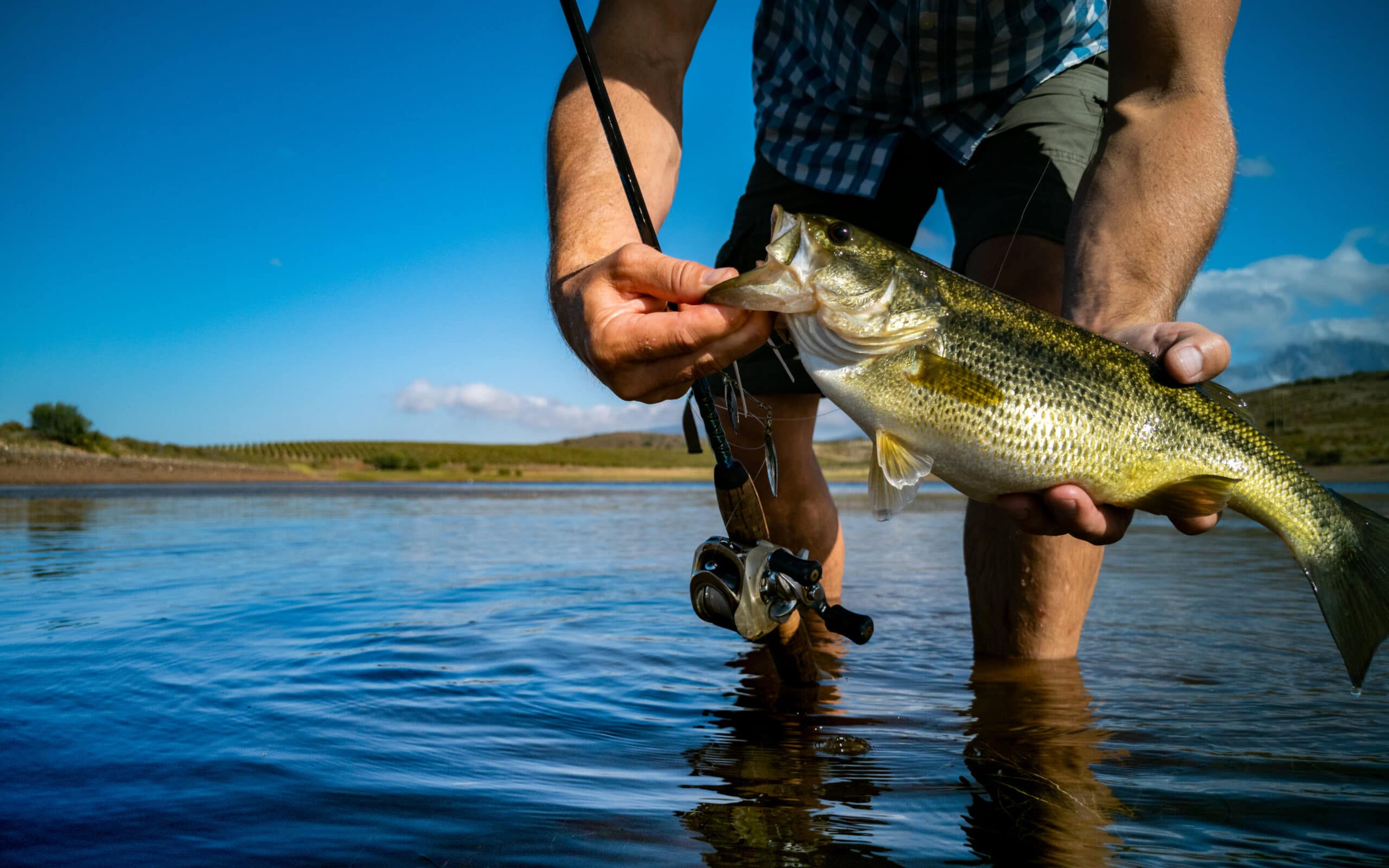
You can attract the fish using vibration and sounds if you don’t have bait. And one of the best ways to do this is by producing vibrations using a hook without the bait.
All you have to do is shake the hook, and the vibrations can attract the fish. Plus, how the light bounces off the hook will activate the fish’s curiosity, forcing it to investigate and get caught.
Some of the best techniques for attracting fish using a hook without bait include:
Dapping
Dapping is the most effective and straightforward method for catching fish without bait. All you have to do is dangle and tap the hook of the water surface to make it seem like an insect or small fly playing on the water.
To do this, you need a lightweight spinning rod and reel with a 4lb test fishing line and tie a small hook on it, and you’re good to go.
When fishing, all you have to do is let your hook hang freely beneath the tip of your rod and tap the water’s surface. Dangle the hook and tap the water a bit. If you do this for an extended period, the fish will think it’s a fly, spider, or ant on the water’s surface.
Despite sounding ridiculous, this method does work, and the only drawback is you need to fish in shallow water. Plus, you will be looking to catch fish right beneath your vessel. However, Dapping works perfectly even when you don’t have bait.
Suspend Your Hook
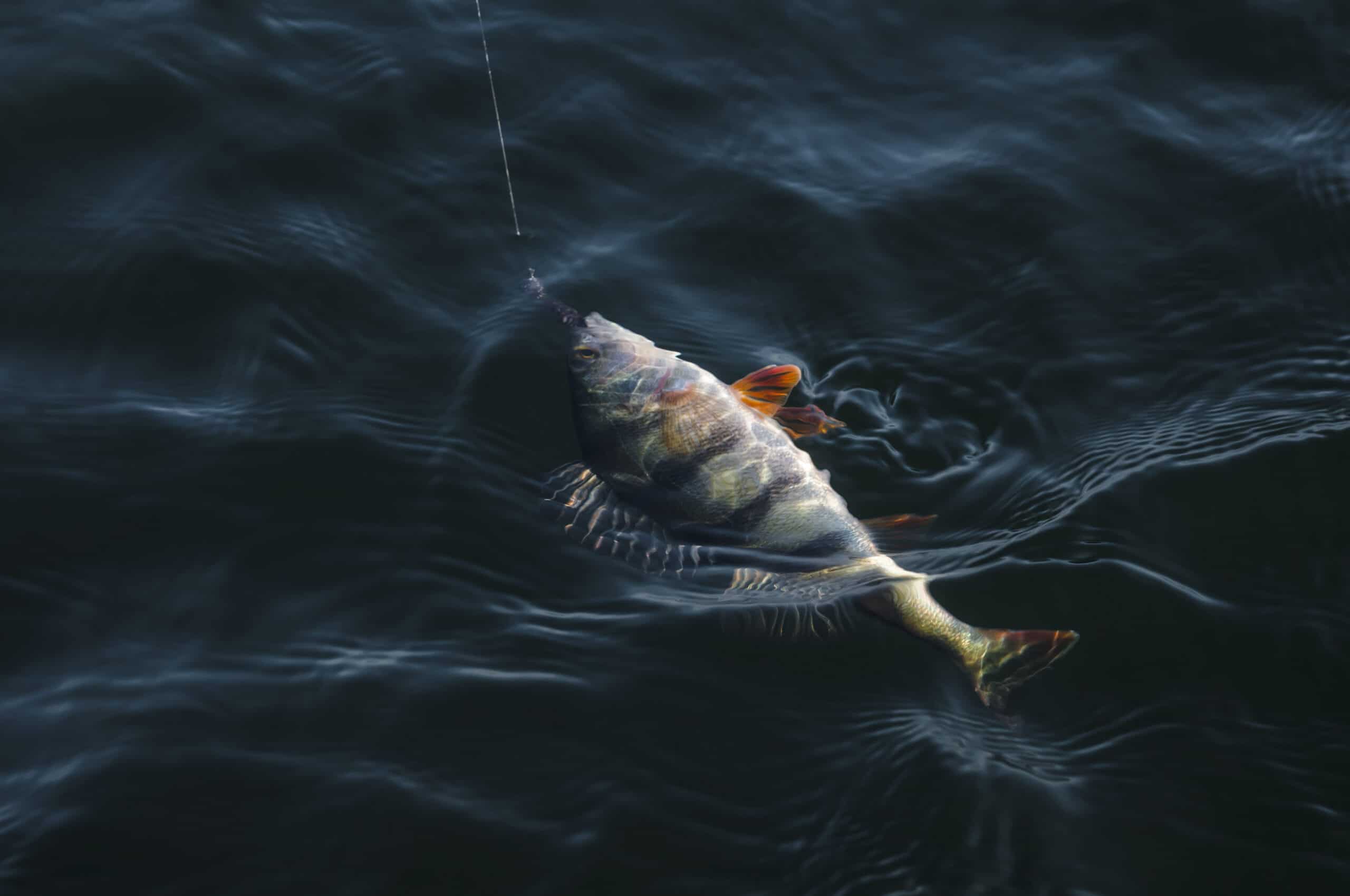
Another reliable method for fishing without bait is lowering the hook into the water and just leaving it suspended.
If you leave it hanging or wiggle the hook, the light will reflect off it, making it look different. Hook suspension is less effective than dapping, but it can surprise you, especially when the fish aren’t responding to dapping.
Bottom Tapping
You can also drop your hook to the bottom of the lake and see if you’ll catch something. But make sure you wiggle and tap the rod and line to produce some vibration. Some fish like trout spend a considerable percentage of their time with their eye looking at the bottom for shrimps and nymphs.
Therefore, the wiggling action of the hook can trick the fish into charging at it and biting the hook.
Try Catching Fish Using Nets
Another fishing method that can function without bait is using nets. Fishing nets are made by knotting thin threads together. Netting is the primary fishing technique commercial fishers use, and it is one of the oldest fishing methods available.
Some of the best netting techniques for catching fish include:
Cast Nets
Cast nets also called throw nets, are circular nets with several small weights on their edges. Cast nets are usually thrown or cast by hand, ensuring they spread out on the lake’s surface and sink.
Cast netting is the safest method for catching fish, and anglers use this method to catch a large school of fish.
Cast netting has been used for centuries and has undergone numerous modifications over the last few years. To catch fish using cast nets, you only need to track a school of fish using your fish finder and then cast your nets and haul them into the boat.
But the only downside is you have to catch the fish in front of you and not below your vessel; therefore, how you position your boat matters.
Dip Nets
When asked about catching fish without bait, the first technique that most anglers think about is dip netting. If a stream has a lot of fish, you can look for a waterfall or nice place behind huge rocks and catch fish. After all, the success of any fishing technique, including dip nets, is the fishing spot.
You can look for an excellent fishing spot using your fish finder and then dip your nets, and hopefully, you will capture some fish. But, for example, trout love slow-moving lakes with fast currents. Therefore, running your net through such spots will not be fruitful since they have numerous escaping options.
So it would be best if you looked for a place where they are cornered, like near a waterfall or a huge rock. And trap them between the rock and your vessel before running your net and capturing them.
Gillnets
Gillnets are excellent nets that trap the fish’s gills as it tries to pass through the net. The fish can neither retreat nor move forward with the gill covers caught. Gillnets are made using either nylon or monofilament lines.
This net is designed to capture the fish’s head as it swims through it and then entraps it as it struggles to free itself. Gillnets are rough, and in most cases, the fish may end up dying while struggling to set itself free. In addition, the net may leave the fish’s heads mangled and twisted.
Gillnets are effective, but they can be lethal to the fish.
Catch Fish Using Traps
Traps are culturally universal and have been invented independently many times over the last few centuries. As a result, numerous traps are grouped into either semi-permanent or permanent structures. And while some traps use bait like pot traps, some unique traps can let you catch fish without bait.
Some of the most effective traps that function without bait include:
Waterfall Traps
The waterfall trap is efficient, especially when installed in the correct stream. For example, if you get a seasonal pool that is almost dry in late summer, you can look for a hardly trickling waterfall and set your trap there. But make sure you scope the stream properly.
The waterfall you pick should not be dry or steep enough for the trapped fish to escape. Once you spot the right place, you can move upstream and examine the stream; if it’s shallow and thin on top, then it will work perfectly.
Next, start constructing the trap using mud and rocks. You can build a well-defined ring at the base of the waterfall. The defined ring is where your catch will be trapped, and make sure it’s strong enough to survive at least two days.
Let the trap settle, and then come back after a few hours, and you will find some fish in your trap. After confirming that the pool has some fish, you can take a stick and go to the top of the waterfall and create some commotion, forcing the fish to fall into your trap.
Fish Wheels
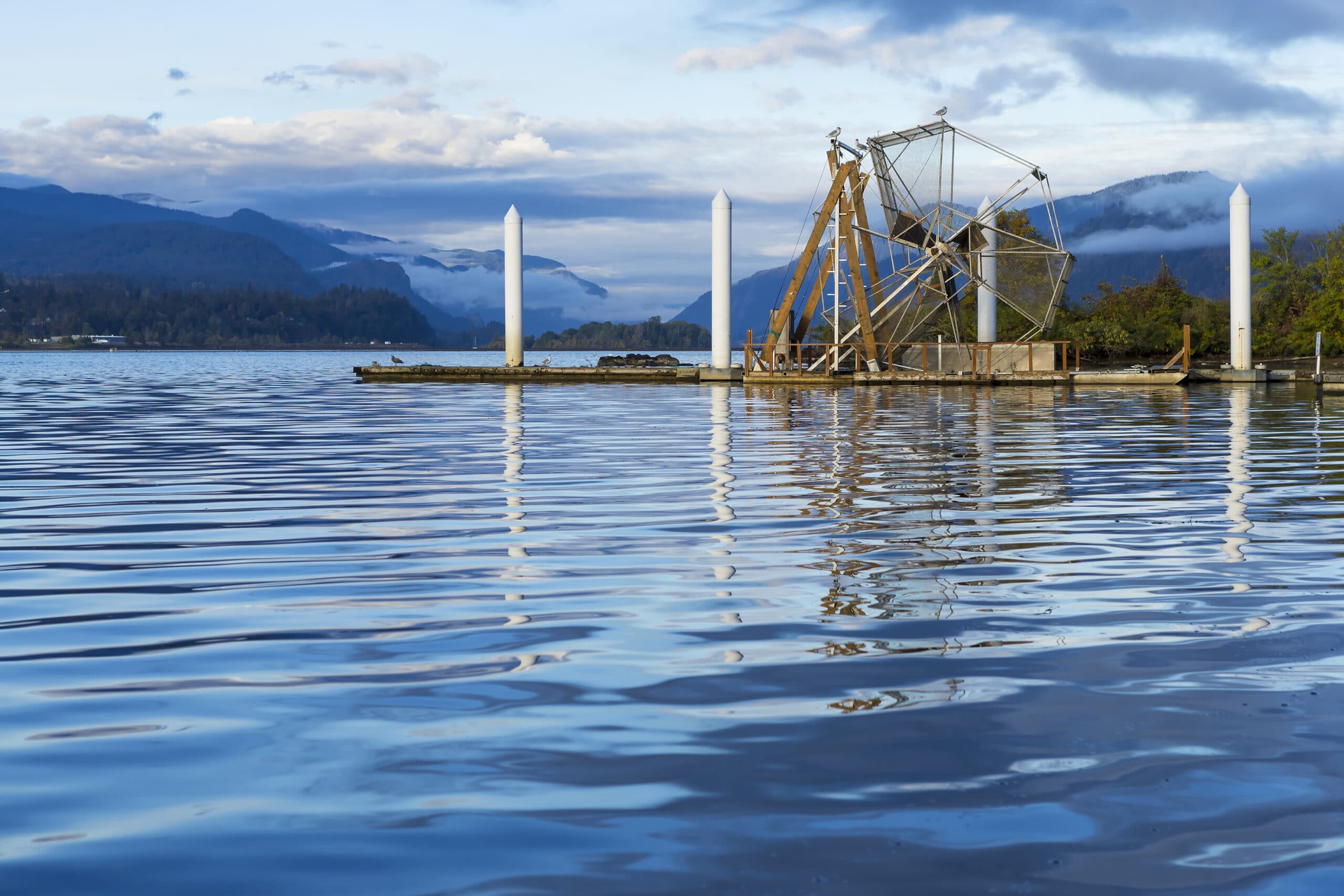
Fish wheels are typically used for fishing in rivers, and they look and function like watermills. The fish wheels have paddles fitted with wire baskets that capture and transport the fish from the river to the holding tank. The paddles are usually rotated by the river currents, pushing the submerged paddle.
This trap is ideal for shallow streams with swift currents, and the fish wheel is normally positioned near the waterfall.
Fish wheels were used in River Ontario during the early twentieth century, but the government banned them. Currently, they are still used in other parts of the world, and this includes Alaska.
Dam Funnel Traps
Dam funnel traps are simple yet effective fishing methods that help you catch more fish. The best place for constructing this trap is on a river with a low-to-medium flow. The only drawback to this trapping technique is its labor-intensive construction.
Look for a narrower spot along the stream to save time when constructing the dam funnel. Next, look for lots of rocks and build a reliable wall across the stream, but leave a small space at the center for water to pass through.
While reinforcing the wall, you will notice a lot of water passing through the gap, which is good.
Once you’re confident that hue fishes cannot pass through the wall, you can focus on the space. You can place mesh barriers at the gap to trap the fish, and since the force of the water will be too much, the fish won’t have enough strength to turn and swim to safety.
You can walk and grab the fish from the net with the trap built.
You can also put a huge dip net in the gap and wait for them to swim into the net and get trapped. Once you have caught enough fish, you can replace the dip net with another one and continue fishing. With a dip net installed between the walls, you can now sit and wait for it to be filled and then replace it.
Fishing Weir
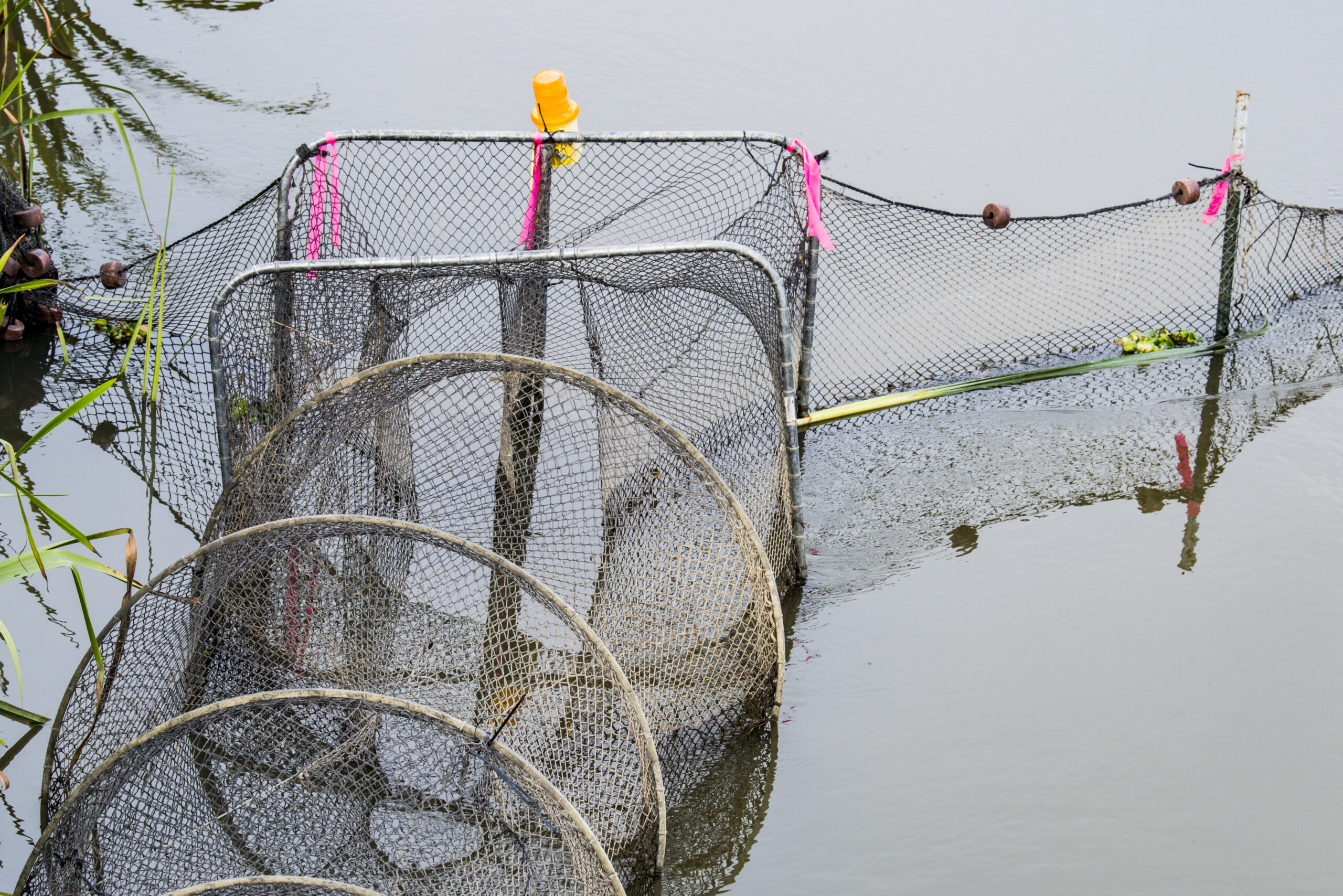
Fishing weir is one of the ancient fishing means used in Asia and the American continents for centuries. This method includes installing an obstruction partially or wholly across the stream to help direct the catch to the trap. Wiers can also help lead the fish to a specific location, like a fish ladder.
Initially, the weirs were built using stones and wood. Plus, scientists believe this fishing method’s origin dates back to the emergence of modern man. It is used in the ocean to trap huge schools of fish by fisheries biologists, recreational anglers, and commercial fishers.
You need a weir or mesh net and an assistant to install the net to set up this trap. First, create a huge pool in the river you want to fish. Your pal can hold one end of the net as you move around the stream to form a circle.
The fish swimming in the pool are not trapped, but you can start moving closer to your partner, and you will see some fish splashing in the net. Continue tightening your net until you can access the fish and catch them. This method works perfectly with trout and won’t hurt them.
Take Advantage of the Many Hiding Holes in the Stream
You can catch fish using the pipe method if the stream has numerous channels and holes. This fun and simple technique will require you to get a black PVC pipe instead of a white one. A white pipe can scare small fish like trout away.
Leave the pipes at the bottom of the water for a very long time. And if the stream has numerous hiding spots, the chances are that the fish can run into the pipe to hide when they feel threatened.
After a few hours, you can stroll into the stream, reach for the pipe, and close both ends using your hands before removing it.
If the pipe mechanism has trapped any trout, you will know. Unfortunately, this fishing method is less likely to catch fish, so you must be patient. And you can increase your probability of catching something by adding several PVC pipes.
The more channels you create in the water, the higher the likelihood of catching more fish. You can even place one end of the pipes near their hiding places to increase your chance of catching something.
Try Electrofishing
Electrofishing is a modern fishing method that uses a direct current between submerged anodes and cathodes. The current affects the fish, forcing them to swim toward the anode, where they are stunned or caught. Electrofishing is a unique method used by scientists when doing a survey.
Scientists can use this technique to sample the population and determine species composition, density, and abundance. When done correctly, the electric current can’t harm the fish; it will return to normal within two minutes.
This method is also popular among commercial fishers. Remember, electricity has more effects in water than in the air, and in small doses, it can stun the fish for a few seconds to allow you to collect them and store them in a bucket.
Is Bait Necessary for Fishing?
Well, bait makes fishing easier and more fun, especially with the fish being attracted by the scent of their favorite food. Baits increase your chances of catching bigger fish, but you don’t have bait doesn’t mean that you can’t fish. After all, you can use numerous effective methods to fish without bait.
All you have to do is alter your typical fishing technique, and you will catch something quickly.
FAQs
Is Bait Necessary for Fishing?
Baits are non-discriminatory fishing gear that attracts even the non-target, under-sized fish species. Unfortunately, baits leave the fish hooked deeply, lowering their chances of survival when released. Therefore, if you can avoid using baits, then try fishing without baits.
Do Fish Love Artificial Baits?
Fake or artificial baits are wonderful, and they can help you catch different types of fish varying in size and weight. Some fish species love fake baits since they are often shiny and more colorful than real ones.
And some anglers claim that artificial baits can capture more fish than real ones, given more time and extensive territories.
Can I Catch a Trout Without Bait?
Yes, there are numerous methods you can use to catch trout even when you don’t have baits. You can use the hook-only method but must be ready to dap and shake the hook to attract the fish. You can also use nets and traps.
Conclusion
Fishing without baits requires you to either use ancient fishing methods or modify your current fishing techniques. But it is possible, and some of the above techniques, like using nets, can help you capture more fish than your angling gear with bait.
But before using any of the above methods, determine if it’s legal in your area.

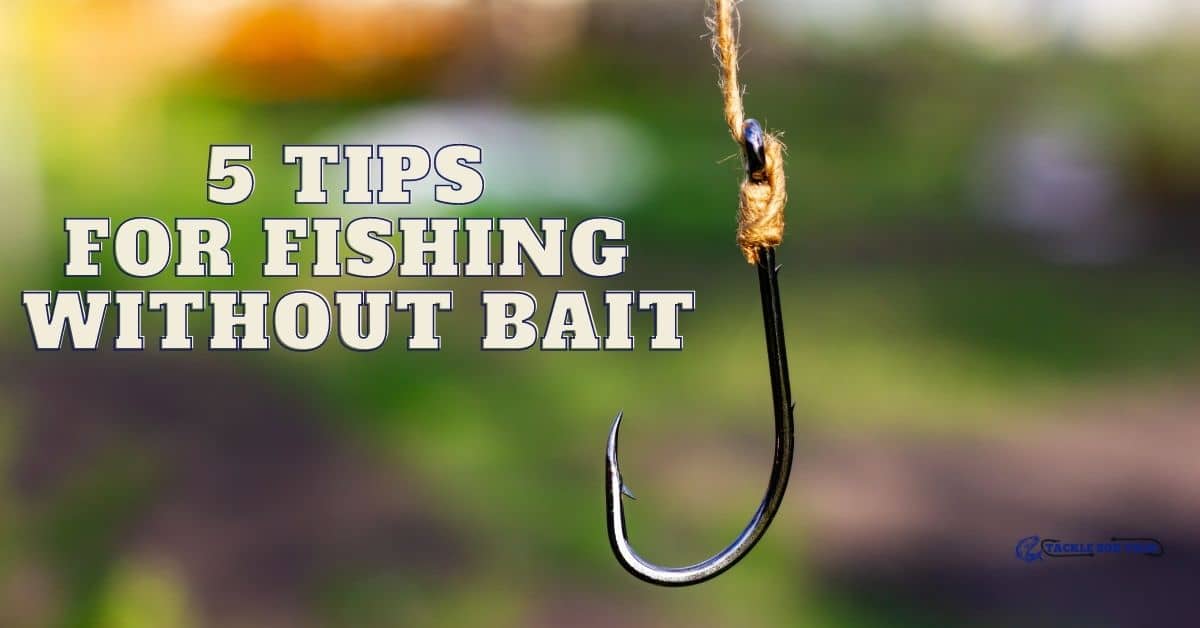



It was interesting to me when you mentioned that cast netting is the safest method for catching large schools of fish. Is it possible to use the cast net method of fishing from the side of a boat? It seems like you would need to be above deep water if you are wanting to catch a school of fish.
Hello Henry, casting the net on the side of the boat will work as well. Deep water is probably where you would find the majority of schools of fish. Thanks for your comment.